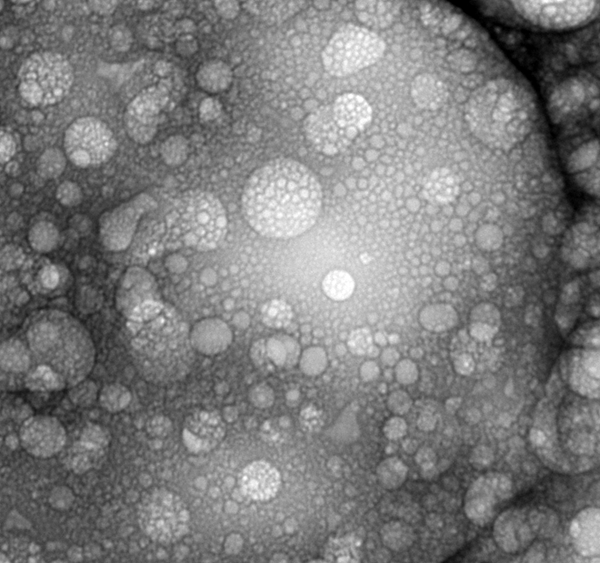Phase separation, which is one process that produces protocells (i.e., primitive compartments), is not just important on early Earth but can also be applied to various applied sciences in the modern day, ranging from biotechnology to synthetic biology to engineering. Here, the authors lay out various modern systems relevant to engineering and applied sciences that utilise phase separation phenomena that may have been relevant to the origin of life as well.

The origin of life on Earth likely began billions of years ago, starting from a messy pool of diverse chemicals shaped by the geology of the planet. Over time, these chemicals began to react together, eventually resulting in functional molecules that likely produced a protocell, or a simple primitive compartment that eventually evolved into modern cells. While some of these primitive compartments may have been made up of lipid bilayers (similar to what is seen in modern cells), other processes could have also resulted in the assembly of primitive compartments. One such process likely prevalent on early Earth is phase separation, which results in the assembly of membraneless compartments that can perform a variety of prebiotically relevant functions that could have eventually led to the emergence of modern cells. In fact, membraneless organelles generated by phase separation are present in almost all modern cells, showing their potential ubiquity early on in the development of life!
Phase separation, however, is not simply limited in importance to primitive chemistries or to sub-cellular structures but are also used in modern applied sciences. Here, the authors describe several engineering and applied science disciplines, including biotechnology, synthetic biology, environmental engineering, and food science, that utilise phase separation to achieve a specific goal through a review article connecting the primitive to the modern in the context of phase separation. This study's co-authors contributed to their particular area of expertise, leading to a very interdisciplinary discussion of phase separation applications.

Tony Z. Jia, specially appointed assistant professor at the Earth-Life Science Institute (ELSI) at Tokyo Institute of Technology, and Irena Mamajanov, specially appointed professor at ELSI, both have extensive experience studying prebiotic chemistry and origins of life. As such, the authors began with a historical overview that highlighted various prebiotically relevant compartment systems studied in the course of the last 100 years, including the first membraneless "coacervates" proposed by Oparin and Haldane, microspherules studied by Fox, and proteinoid Jeewanu compartments studied by Bahadur. This was followed by a discussion of prebiotically plausible phase separated compartment systems as a way to frame the entire study in the context of primitive phase separation.
Jia then utilised his previous experience studying biomolecular interactions between phase separated systems (such as aqueous two-phase systems, coacervates, and polyester microdroplets) and biomolecules to discuss how phase separation is used in modern biotechnology applications. This included a discussion on phase separation usage in biomolecule purification and extraction, as well as drug delivery.
Tatsuya Niwa, assistant professor at the Tokyo Institute of Technology Institute of Innovative Research, was able to then contribute to a discussion on phase separation applied to Synthetic Biology. Niwa has extensive experience in synthetic biology, and in particular artificial cell research (he is a member of the organising committee of the 2021 Japan Society of Cell Synthesis Research, to be hosted by ELSI and chaired by ELSI professor Tomoaki Matsuura). As such, biological processes imbued into phase separated systems and artificial cell systems were discussed in detail, including metabolons, which are natural cascading enzymatic reactions that leads to biomolecular associations (sometimes resulting in phase separation) and are a topic of Niwa's previous research.
Then, Po-Hsiang Wang, Assistant Professor at National Central University (and former ELSI member and current ELSI affiliate), used his experience studying environmental engineering to discuss how phase separation has been used to design pollution and waste control systems. Finally, Mamajanov used her experience in analytical chemistry (and interest in food science) to discuss how phase separation is used in the food industry for various effects, such as flavour/nutrient encapsulation and delivery as well as texturisation.

This article originated as an invited review as a part of the Phase Separation in the Nucleus (PSINU) 2021 meeting in April 2021, where Jia was a speaker, organised by the Indian Academy of Sciences, Bangalore and Indian Institute of Science Education and Research (IISER), Pune. In this sense and to promote the mission of the meeting, the authors would like to encourage phase separation researchers in the origins of life and prebiotic chemistry field to explore and work with those studying phase separation in the context of engineering/applied sciences, as there are likely a significant number of potential collaborations and synergies that could result in groundbreaking interdisciplinary research in both fields.
| Journal | Journal of Biosciences |
| Tile of the paper | Connecting primitive phase separation to biotechnology, synthetic biology, and engineering |
| Authors | Tony Z Jia1,2*, Po-Hsiang Wang1,3, Tatsuya Niwa4, Irena Mamajanov1 |
| Affiliations | 1. Earth-Life Science Institute, Tokyo Institute of Technology, 2-12-1-IE-1 Ookayama, Meguro-ku, Tokyo 152-8550, Japan 2. Blue Marble Space Institute of Science, 1001 4th Ave., Suite 3201, Seattle, Washington 98154, USA 3. Graduate Institute of Environmental Engineering, National Central University, Zhongli Dist, 300 Zhongda Rd, Taoyuan City 32001, Taiwan 4. Cell Biology Center, Institute of Innovative Research, Tokyo Institute of Technology, Nagatsuta-cho 4259, Midori-ku, Yokohama 226-8503, Japan |
| DOI | 10.1007/s12038-021-00204-z |
| Online published date | August 6th, 2021 |
